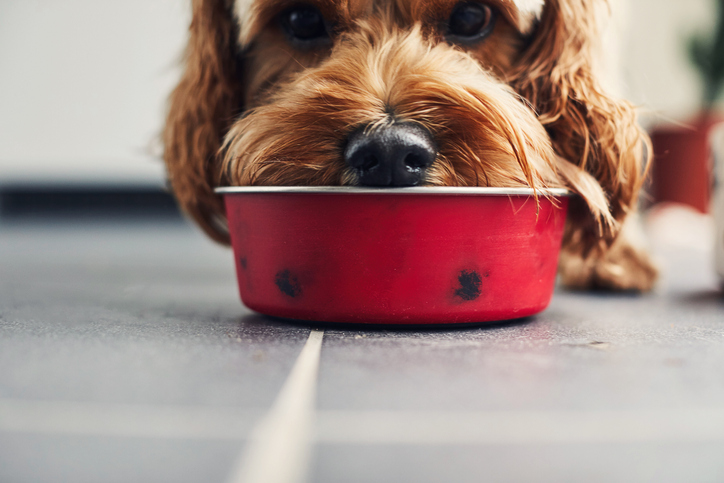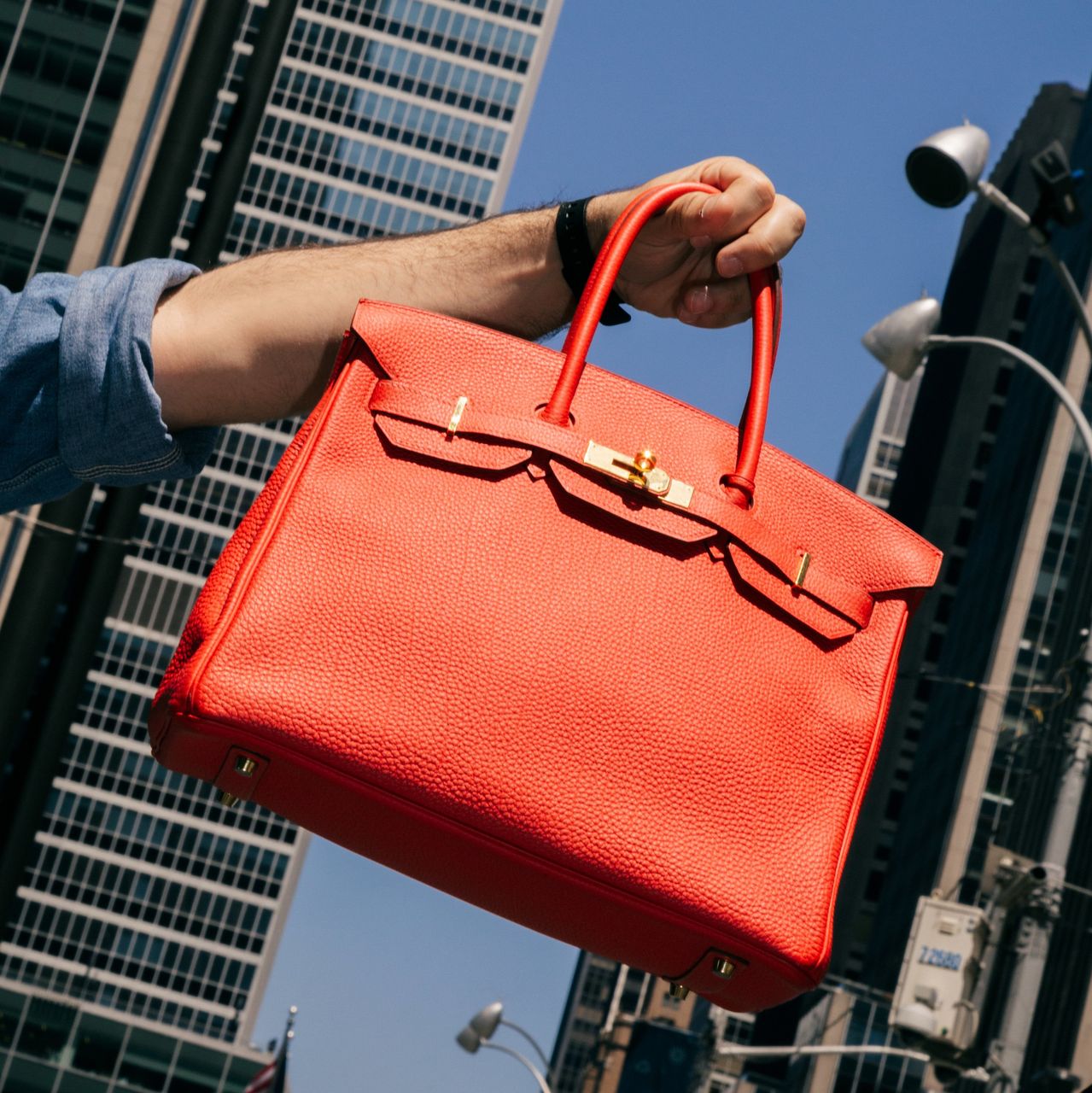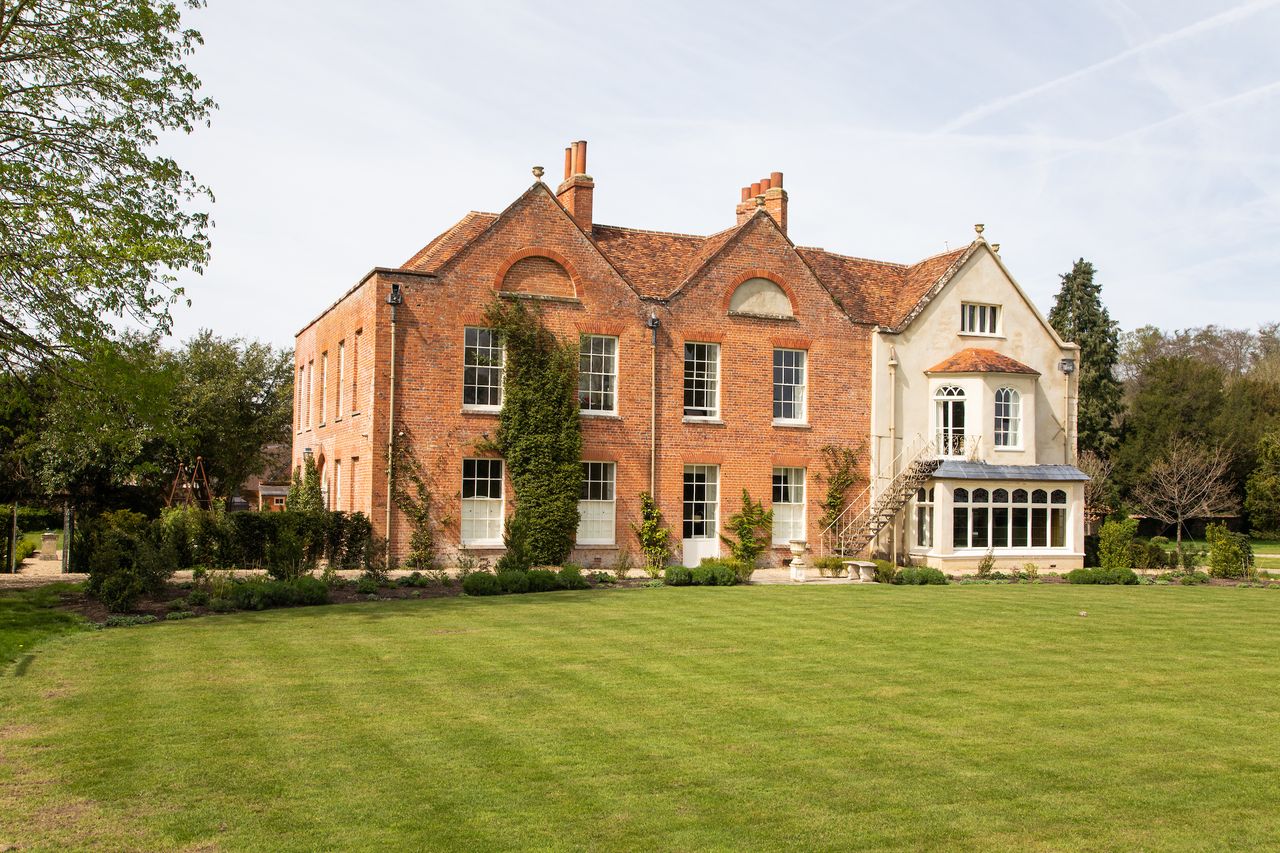How Did My Dogs Become My Decorators?
Dog-food bowls and chew toys always underfoot? Leashes hung like nooses to greet guests at the front door? Columnist Michelle Slatalla wonders if there’s a cure for her problem.
AT A DINNER recently, my friends were ticking off their home-décor-related New Year’s resolutions. I was feeling pretty smug. After all, I’ve spent years repainting, reupholstering, rearranging and refinancing my house to make it comfortable.
Later that night as I was lying in bed, my little papillon Pigeon gently pawed at me. Then with his adorable, black dog lips he gave me a quick kiss on my nose. This is one of our many, many sick bedtime routines, but I love him so much. So I crawled out from under the covers to help him make his evening bone selection.
Suddenly, I saw my bedroom through a stranger’s eyes—someone who perhaps doesn’t love Meester Smeedge-Smeedge or Larry (my other papillon) as much as I do.
Specifically, in the corner of the room, next to a beautiful forest-green mohair sofa where I sometimes work, was a squalid, dank, metal dog crate which no dog has slept in ever. Inside it was a bigger pile of bones than you’d find in Dr. Lecter’s backyard. It also contained a dozen, greying, chewed-up chew toys, including the disemboweled remnants of a squeaky stuffed squirrel. Splayed on top of the crate—where no dog could ever reach—was, inexplicably, a pet mattress (fleece, unused).
The whole scene looked disgusting.
Then I started to notice other pet-related décor problems in my house. An assortment of water bowls and food bowls had transformed the kitchen into an obstacle course of spilled kibble. A dozen tiny rubber balls created a tripping hazard in the living room. A tangle of leashes hung like nooses in the foyer to welcome guests to our home.
“I can’t pinpoint exactly when this happened, but somehow my dogs have become my decorators,” I complained to Peter Scott, chief executive of the American Pet Products Association in Stamford, Conn.
“Don’t worry, you’re not the only one living like this,” said Mr. Scott, pointing out that 70% of U.S. households own pets, a figure that has been increasing steadily since 1988, when his trade group began surveying pet owners annually.
Over those 35 years, pet owners’ relationships with their animals also have evolved. Nowadays, animals are likely to be treated like full-fledged family members, Mr. Scott said: “It’s the humanization of pets. We’re seeing more young people who may not be ready for a kid, but they are ready to come home after work and take care of a dog or a cat.”
Along with more pets come greater decorating challenges. Last year, in fact, pet owners spent nearly $100 million on toys for dogs and cats, Mr. Scott said.
“That’s a lot of slobbery rubber balls to litter living room floors across America,” I said.
“Yeah, I’m tripping over them everywhere at my house,” admitted Mr. Scott, who it turns out has an adorable mini goldendoodle named Tucker.
What’s the solution? “We’ve started having conversations about whether we should be doing educational programs for architects and designers about how to create seamless, pet-friendly environments that go beyond having a doggie door,” Mr. Scott said.
Actually, many design professionals already are coming up with innovative solutions for clients who have pets.
Dog-washing stations in mudrooms, pullout drawers for food bowls in kitchens and “dog caves” built into nooks under staircases are becoming common, said Laura Sockrider, a designer at Martha O’Hara Interiors in Austin, Texas.
For a client who has two beagles, Ms. Sockrider recently designed a foyer that can be closed off with a waist-high pocket door—“it’s like a disappearing metal dog gate,” she said—to prevent the dogs from rushing the front door when visitors arrive.
“Another thing I like to do in an entryway is accessorise a console table with boxes and bins that have lids,” she said. “Your dog’s super-duper-slobbered ball might not be the first thing you want to see when you come in the front door, so it’s good to have a place to stash toys and leashes.”
Andrew Hill, co-founder and an architectural designer at Studio for Architecture & Collaboration in Toronto, recently designed a built-in dog nook—complete with a peaked roof like a traditional backyard doghouse—to take advantage of an awkward space in an L-shaped kitchen-cabinet unit. “This kind of design is very functional because otherwise that dog’s bed would have been thrown in the corner of the room, and that would have been unfortunate in such a small space,” he said.
“Catification” is always an emerging design trend. “Cat owners also are doing some cool things, like putting in kitchen shelves at heights that create levels for cats to climb,” said Molly Sumridge, an assistant professor of anthrozoology at Carroll College in Helena, Mont. “Having high spaces to hang out in is something cats intrinsically need as a species and it’s also a design that works well for humans—it keeps cats off the counters.”
This reminded me why I am not a cat person.
So, getting back to Pigeon—as I type, he is sleeping next to his bone collection, with one paw pressing against my foot as if a nap overtook him when he was in the process of giving me a nudge.
“He’s so cute, I wish you could see him,” I said to Prof. Maggie O’Haire, an associate dean of veterinary medicine at the University of Arizona. “But it would have been great if I thought of all these clever design ideas when I was remodelling my house a decade ago. Then I could have hidden all physical evidence of him and Larry in my house.”
“But is the mess really a problem? After all, pets themselves are almost a design element in a house,” Prof. O’Haire said. She pointed out that studies show that seeing your pet—or even your pet’s stuff—can improve your mood. “The sight of your dog resting on a chair can change your emotions,” she said.
Similarly, the sight of a dog crate “is like seeing a crib for a baby—it can bring back memories of when you first brought home that pet,” Prof. O’Haire said.
“Oh, yes, he was eight weeks old, and so little and fluffy, with huge ears,” I said, making a note to email her a photo after we got off the phone.
“On the other hand, people like to have some sense of order in their homes,” she said, steering me back on topic. The idea was to take back control. “So maybe you could get a basket for the toys,” she said.
“And bones,” I reminded her.
At that, Pigeon (whose English isn’t perfect), jumped up and brought me one of his squeaky balls.
“Sorry, got to go,” I said, and hung up.
 Copyright 2020, Dow Jones & Company, Inc. All Rights Reserved Worldwide. LEARN MORE
Copyright 2020, Dow Jones & Company, Inc. All Rights Reserved Worldwide. LEARN MORE
This stylish family home combines a classic palette and finishes with a flexible floorplan
Just 55 minutes from Sydney, make this your creative getaway located in the majestic Hawkesbury region.
As Paris makes its final preparations for the Olympic games, its residents are busy with their own—packing their suitcases, confirming their reservations, and getting out of town.
Worried about the hordes of crowds and overall chaos the Olympics could bring, Parisians are fleeing the city in droves and inundating resort cities around the country. Hotels and holiday rentals in some of France’s most popular vacation destinations—from the French Riviera in the south to the beaches of Normandy in the north—say they are expecting massive crowds this year in advance of the Olympics. The games will run from July 26-Aug. 1.
“It’s already a major holiday season for us, and beyond that, we have the Olympics,” says Stéphane Personeni, general manager of the Lily of the Valley hotel in Saint Tropez. “People began booking early this year.”
Personeni’s hotel typically has no issues filling its rooms each summer—by May of each year, the luxury hotel typically finds itself completely booked out for the months of July and August. But this year, the 53-room hotel began filling up for summer reservations in February.
“We told our regular guests that everything—hotels, apartments, villas—are going to be hard to find this summer,” Personeni says. His neighbours around Saint Tropez say they’re similarly booked up.
As of March, the online marketplace Gens de Confiance (“Trusted People”), saw a 50% increase in reservations from Parisians seeking vacation rentals outside the capital during the Olympics.
Already, August is a popular vacation time for the French. With a minimum of five weeks of vacation mandated by law, many decide to take the entire month off, renting out villas in beachside destinations for longer periods.
But beyond the typical August travel, the Olympics are having a real impact, says Bertille Marchal, a spokesperson for Gens de Confiance.
“We’ve seen nearly three times more reservations for the dates of the Olympics than the following two weeks,” Marchal says. “The increase is definitely linked to the Olympic Games.”

Getty Images
According to the site, the most sought-out vacation destinations are Morbihan and Loire-Atlantique, a seaside region in the northwest; le Var, a coastal area within the southeast of France along the Côte d’Azur; and the island of Corsica in the Mediterranean.
Meanwhile, the Olympics haven’t necessarily been a boon to foreign tourism in the country. Many tourists who might have otherwise come to France are avoiding it this year in favour of other European capitals. In Paris, demand for stays at high-end hotels has collapsed, with bookings down 50% in July compared to last year, according to UMIH Prestige, which represents hotels charging at least €800 ($865) a night for rooms.
Earlier this year, high-end restaurants and concierges said the Olympics might even be an opportunity to score a hard-get-seat at the city’s fine dining.
In the Occitanie region in southwest France, the overall number of reservations this summer hasn’t changed much from last year, says Vincent Gare, president of the regional tourism committee there.
“But looking further at the numbers, we do see an increase in the clientele coming from the Paris region,” Gare told Le Figaro, noting that the increase in reservations has fallen directly on the dates of the Olympic games.
Michel Barré, a retiree living in Paris’s Le Marais neighbourhood, is one of those opting for the beach rather than the opening ceremony. In January, he booked a stay in Normandy for two weeks.
“Even though it’s a major European capital, Paris is still a small city—it’s a massive effort to host all of these events,” Barré says. “The Olympics are going to be a mess.”
More than anything, he just wants some calm after an event-filled summer in Paris, which just before the Olympics experienced the drama of a snap election called by Macron.
“It’s been a hectic summer here,” he says.

AFP via Getty Images
Parisians—Barré included—feel that the city, by over-catering to its tourists, is driving out many residents.
Parts of the Seine—usually one of the most popular summertime hangout spots —have been closed off for weeks as the city installs bleachers and Olympics signage. In certain neighbourhoods, residents will need to scan a QR code with police to access their own apartments. And from the Olympics to Sept. 8, Paris is nearly doubling the price of transit tickets from €2.15 to €4 per ride.
The city’s clear willingness to capitalise on its tourists has motivated some residents to do the same. In March, the number of active Airbnb listings in Paris reached an all-time high as hosts rushed to list their apartments. Listings grew 40% from the same time last year, according to the company.
With their regular clients taking off, Parisian restaurants and merchants are complaining that business is down.
“Are there any Parisians left in Paris?” Alaine Fontaine, president of the restaurant industry association, told the radio station Franceinfo on Sunday. “For the last three weeks, there haven’t been any here.”
Still, for all the talk of those leaving, there are plenty who have decided to stick around.
Jay Swanson, an American expat and YouTuber, can’t imagine leaving during the Olympics—he secured his tickets to see ping pong and volleyball last year. He’s also less concerned about the crowds and road closures than others, having just put together a series of videos explaining how to navigate Paris during the games.
“It’s been 100 years since the Games came to Paris; when else will we get a chance to host the world like this?” Swanson says. “So many Parisians are leaving and tourism is down, so not only will it be quiet but the only people left will be here for a party.”
This stylish family home combines a classic palette and finishes with a flexible floorplan
Just 55 minutes from Sydney, make this your creative getaway located in the majestic Hawkesbury region.






















